ARTIFICIAL INTELLIGENCE CAN REVOLUTIONISE TRAFFIC MANAGEMENT IN INDIAN CITIES
As urbanisation expands and the percentage of the world population living in urban areas continues to increase, the demand for effective and efficient urban transportation solutions is rising. Traffic management solutions in Indian cities have failed to meet the people’s expectations as it has been unable to keep pace with the high-density urbanisation and the rapid adoption of new mobility solutions. Artificial intelligence (AI) could revolutionise traffic management in Indian cities in the next few years by improving operational efficiency, increasing safety, and making transportation safer and more affordable. AI has already made its presence felt in various industries and fields, including healthcare, education, and the military. AI is slowly entering the transportation sector and is bound to transform traffic management solutions in Indian cities.
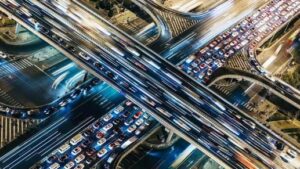
Deploying Artificial intelligence in the transport sector can improve operational efficiency. First, authorities can use AI to optimise routes; instead of each traffic operator manually calculating the best possible path. A computer program can perform the function using real-time traffic data, saving time and money, especially during rush hour. Similarly, we can also use AI to manage vehicle flow, which would reduce delays caused by “idling” in traffic or the practice of drivers keeping their vehicles stationary in a congested area to avoid being late. Finally, police can deploy AI to increase transparency which can prove valuable both to citizens and authorities as it can help reduce the incidence of traffic violations. Further, the use of AI in transportation in different countries today is helping identify traffic hazards, ease traffic congestion; reduce emissions; design and manage transport, and analyse travel demand and pedestrian behaviour
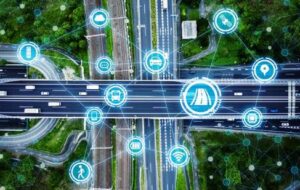
In Bengaluru, India, an AI-based monitoring system developed by Siemens Mobility is under operation to collect data with intelligent cameras, adjust traffic lights in real-time, and thus facilitate traffic flow. In Pittsburgh, the USA, a similar solution, called SurTrac, created by Rapid Flow Technologies, resulted in a 25% reduction in travel times and a 20% reduction in emissions which is a perfect example of how artificial intelligence may represent a critical factor in achieving sustainable transportation.
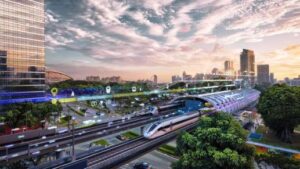
AI algorithms are accurately tracking and counting freeway traffic and analysing traffic density in urban settings, which is helping towns and cities to design more efficient traffic management systems while at the same time improving road safety. CCTV cameras can spot dangerous events and other anomalies and provide insights into peak hours, chokepoints, and bottlenecks. It can also quantify and track changes over a period to measure traffic congestion. As a result, town planners can significantly reduce urban traffic congestion.
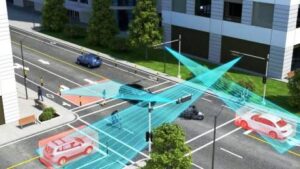
With the increasing number of vehicles on Indian roads, managing traffic has become a Herculean task for city authorities. India is among the countries with the highest concentration of traffic congestion. To make matters worse, the number of vehicles keeps increasing, which presents a double whammy for city authorities: Not only do they have to deal with existing congestion but also plan for the increasing number of vehicles on the road in the coming years. Traffic management solutions can help reduce congestion and ensure that roads are kept safe and accessible for all—but they need to be used intelligently. Fortunately, artificial intelligence can help city authorities take the next step in traffic management.
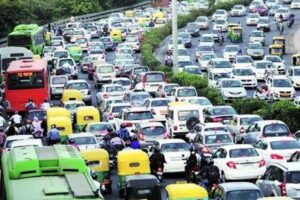
In several countries, sensors and cameras embedded on the roads collect and transmit enormous traffic data to the cloud, which is analysing the data using big data analytics and an AI-powered system to provide an accurate picture of traffic in a given city. Such insights are valuable for predicting and managing traffic effectively. By sharing essential details like traffic predictions, accidents, or road blockages and notifying them about the shortest route to their destination, AI can help commuters travel without traffic hassles. This way, AI can reduce unwanted traffic, improve road safety, and reduce wait times.
Traffic congestion costs Indian cities $21 billion a year. With more than 1.2 billion people travelling through its cities every year, India is one of the most congested countries globally; this has led to an average speed of fewer than five kilometres per hour in some of its largest cities. Worse, the country experiences traffic jams that last for hours every day. Traffic jams are so common in India that people from other cultures often ask, “why don’t Indians drive like Europeans?” In context, the total economic cost of traffic congestion in Indian cities was $21 billion in 2017, equivalent to 0.8% of the country’s GDP that year.
Traffic flow on the roads will invariably cause traffic incidents and hold-ups. AI systems help traffic flow with the least disruption during such traffic incidents. AI systems using computers and sensors can constantly monitor the entire network of CCTV cameras and look at incidents, queues and unusual traffic conditions and provide a constant flow of data. Whenever the AI-driven systems detect traffic incidents or anomalies, they alert the Control Centres. An AI system called Clearway can spot an incident within the first ten seconds after its occurrence and can function under any lighting and weather conditions. Not just on open roads, it works in the tunnels also. The AI system can detect debris, animals, stationary vehicles, fast and slow-moving vehicles and vehicles travelling in the wrong direction.
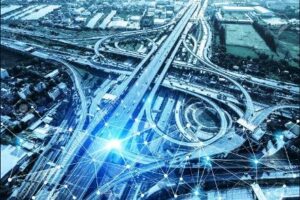
India reports about 500,000 road accidents annually, with over 150,000 deaths. These statistics are one of the highest across the world. Human error due to driver fatigue is one of the main reasons for road accidents. We cannot eliminate human error by instructing drivers to drive more carefully. Fitting car cabins with Computer vision will ensure better, safer driver monitoring. Such technology can stave off thousands of crashes and deaths every year by looking out for drowsiness and emotional recognition of those behind the wheels. Many drivers don’t admit that fatigue or feeling a bit exhausted will impact their ability to drive. AI-driven tech can alert a driver whenever their driving is taking a significant hit due to fatigue and advise them to pull over and rest, ensuring the safety of the driver, the passenger, and other road users. Another area in which technology can be valuable is driver distraction. If a driver is distracted – for example, by their mobile device – the tech can alert them immediately to stay focused on the road. Other distractions might include chatting to a back seat passenger, which could impair the concentration without the driver realising it.
AI systems can enhance road safety in several ways. First, AI, by analysing data collected by the roadside units of traffic police, which may include data about the weather, the driving behaviour of other motorists, and the state of the road, can help the authorities issue accurate and reliable warnings about road conditions to the road users. Second, AI systems have proved useful in identifying dangerous driving behaviour, including excessive speeding, unsafe lane changes, and failure to obey traffic signs. Third, AI is an excellent tool to identify risky drivers, which can help authorities issue warnings and, in extreme cases, even take proactive steps to prevent crashes, such as automatically blocking a driver’s vehicle when the police suspect drunk driving.
The Minister of Road Transport and Highways, Nitin Gadkari, has announced his plans to use artificial intelligence (AI)-based technology to improve transportation. The priority areas identified by the Minister for AI applications include -Forensic post-crash investigations, the pattern of accidents due to black spots, Fatigue indicators, Sleep detectors, and Advanced vehicle collision avoidance systems. AI reduces the need for human interference in road safety systems, making them more efficient and effective.

The Minister recently launched the AI-Powered iRASTE Project For Road Safety for Nagpur Municipal Corporation’s fleet of vehicles by equipping them with collision avoidance technology to reduce accidents and near misses by up to 60%. The technology envisages the deployment of sensors to help map the dynamic risk of the entire road network, recommend engineering fixes for existing black spots and implement an AI-powered system for continuous monitoring of road infrastructure. Leveraging the power of AI – the project aims to achieve up to a 50% decline in road accidents in Nagpur city and create a blueprint of Vision Zero for the country. For the first time in the country, a state-run bus corporation is probably using AI technology on a large scale to reduce accidents.
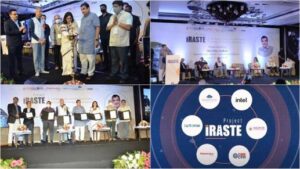
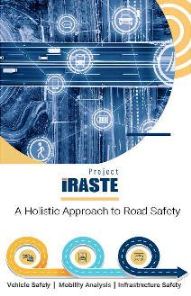
Further, the Karnataka State Road Transport Corporation (KSRTC), to limit road accidents and improve passenger safety in buses last June, has floated a tender for the implementation of an AI-powered Collision Warning System (CWS) and Driver Drowsiness System (DDS) for 1,044 buses. CWS will provide forward-looking collision warnings (FLCW), lane departure warnings (LDW), and a virtual bumper. It will also generate real-time alerts. Last August, the Indian Institute of Technology in Mandi (IIT-Mandi) created an intelligent road monitoring system to prevent mishaps prompted by sharp or blind turns. The system functions through sensors that detect the speed, path, gradient of the slope, and type of vehicle and alerts the driver about the oncoming turn.
In addition to making transportation cheaper, AI can also make travel more convenient. Thanks to several modern technologies in the airline, train, and bus industries, this is possible. For example, airlines increasingly use “smart” check-ins that allow passengers to check in online, print their boarding passes, and track their bags’ progress through the baggage handling system. Similarly, modern transport operators may no longer have to calculate the routes manually. Instead, they can use real-time journey planning software that uses live weather data to calculate the best possible route leading to reduced costs.

Smart cities are all the rage right now. They aim to take advantage of all of the digital disruption that is happening in the world today. These smart cities will be safer, less polluted, and better connected. They will also be able to handle more people and more traffic by making better use of artificial intelligence (AI).
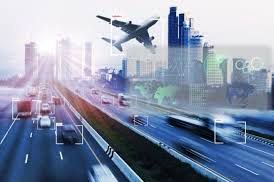
In the digital era, cities are facing unprecedented challenges to keep pace with the changing landscape. From rapid urbanization to a changing climate, urban planners are exploring new ways to make city life easier, more efficient, and more sustainable. To achieve this, they are turning to artificial intelligence, or AI, to drive better, more personalized city services and make urban areas more livable. AI has the potential to transform city life by enhancing the way people move around and efficiently use resources. Cities can use AI to improve traffic management, identify and respond to emerging hazards, and even plan for a growing population.
Artificial intelligence has, therefore, the potential to revolutionise traffic management in Indian cities by improving operational efficiency, increasing road safety, and making transportation cheaper and more convenient for all. Deploying AI to improve road safety, identify and penalise dangerous drivers, and enhance the accuracy of traffic signs and warnings is particularly important in densely populated cities where millions of people travel on poorly maintained roads every day.
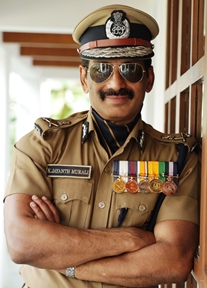 Dr.K. Jayanth Murali is an IPS Officer belonging to 1991 batch. He is borne on Tamil Nadu cadre. He lives with his family in Chennai, India. He is currently serving the Government of Tamil Nadu as Additional Director General of Police, Idol Wing CID.
Dr.K. Jayanth Murali is an IPS Officer belonging to 1991 batch. He is borne on Tamil Nadu cadre. He lives with his family in Chennai, India. He is currently serving the Government of Tamil Nadu as Additional Director General of Police, Idol Wing CID.


